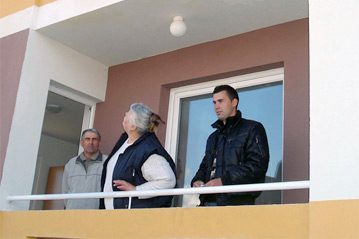Lubbers urges caution on southern Serbia buffer zone
Lubbers urges caution on southern Serbia buffer zone
GENEVA - The United Nations High Commissioner for Refugees (UNHCR) today warned against an overly hasty change in southern Serbia's ground safety zone - a buffer belt which separates Serbia proper from UN-administered Kosovo.
"Any rapid change of the situation in the ground safety zone could destabilise the area and cause further displacement of ethnic Albanians from southern Serbia into Kosovo. This could have a negative knock-on effect on the already precarious situation of Kosovo's vulnerable ethnic minorities," said High Commissioner Ruud Lubbers.
UNHCR says the reduction of the 5 kilometre-wide buffer zone must be accompanied by the deployment of a sufficient number of international monitors, as well as a set of confidence-building measures linked to political and administrative reforms in the area. It says greatest importance must be attached to the security and protection of the civilian population in the zone itself, as well as in the adjacent towns and villages.
Earlier this week, NATO announced plans for a "phased and conditioned withdrawal" from parts of the safety zone established under a 1999 agreement between NATO and the Federal Republic of Yugoslavia. The agreement barred Yugoslav and Serbian security forces, except for lightly armed police, from the area. Arrangements for a phased reduction are not decided but preliminary reports speak of a planned gradual return of Serbian civilian police forces to the zone, which is supposed to remain demilitarised.
UNHCR expressed hope that a quick deployment in southern Serbia of a sizeable number of European Union monitors would help stabilise the situation. But the agency cautioned that while the presence of monitors and civilian police is important, it is also crucial that an effective mechanism be put in place for verification and supervision of the demilitarisation of the area.
Ethnic Albanians account for 60 to 70 percent of some 100,000 people living in the buffer zone and adjacent areas. Tensions have remained high in southern Serbia, which has been the scene of repeated clashes between armed ethnic Albanian militants and Yugoslav and Serbian security forces. A rise in tension last November led to the exodus of some 5,000 ethnic Albanians from southern Serbia to neighbouring Kosovo. About 4,000 of them have since gone back to their homes in southern Serbia but the situation continues to be very fragile.









